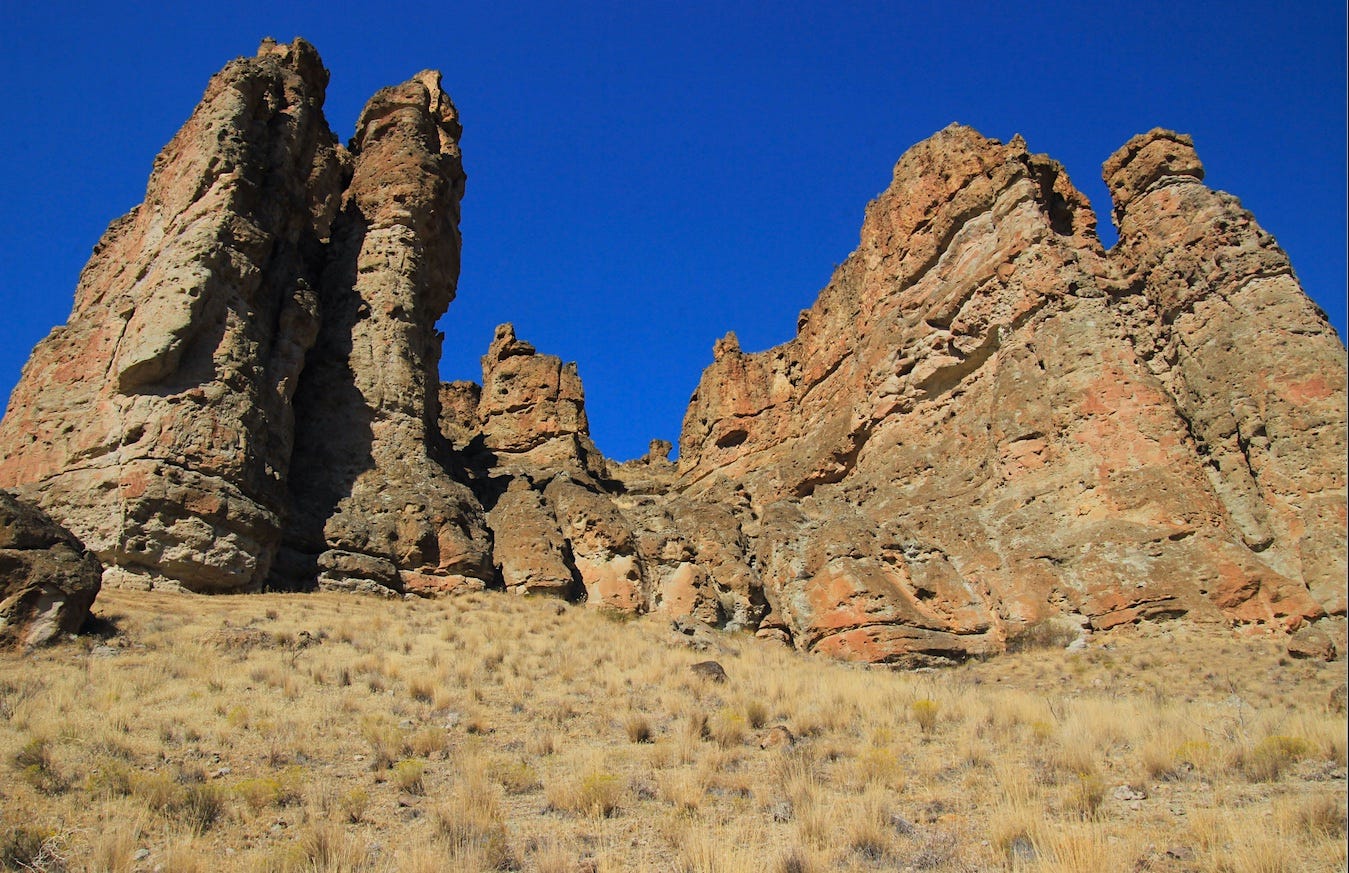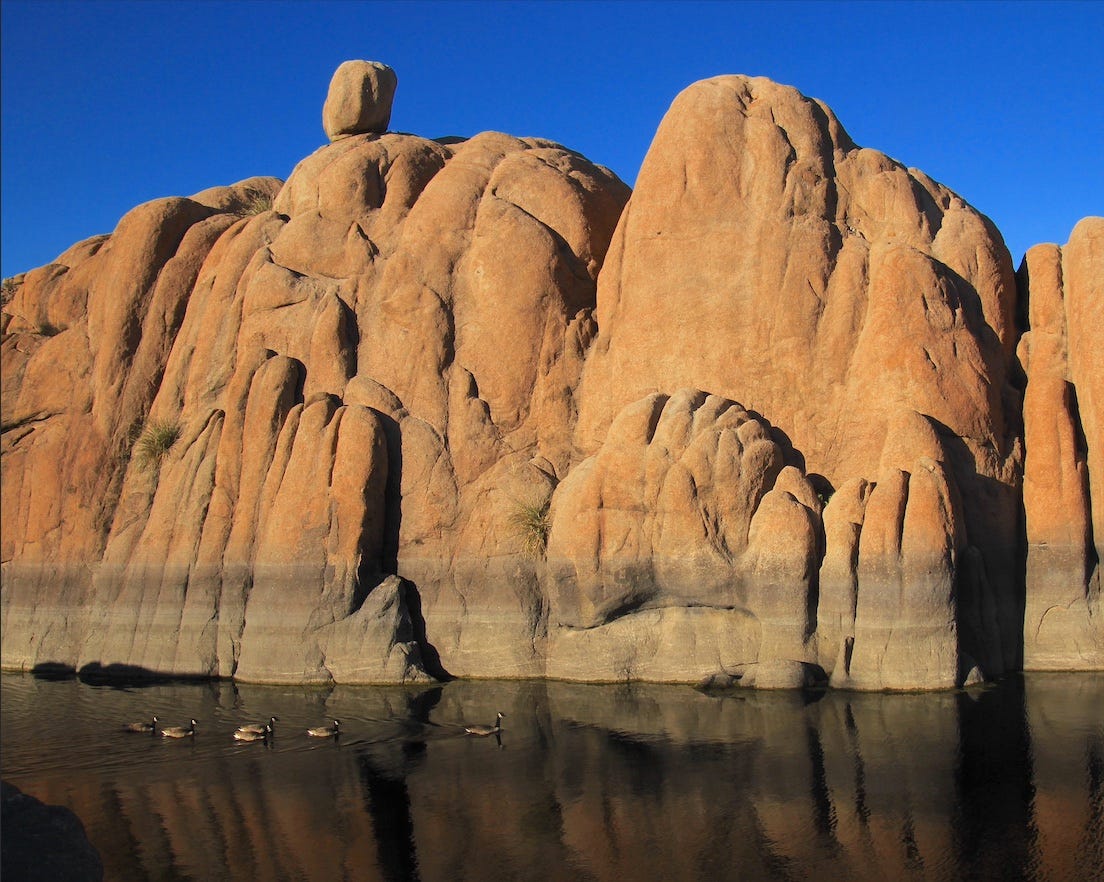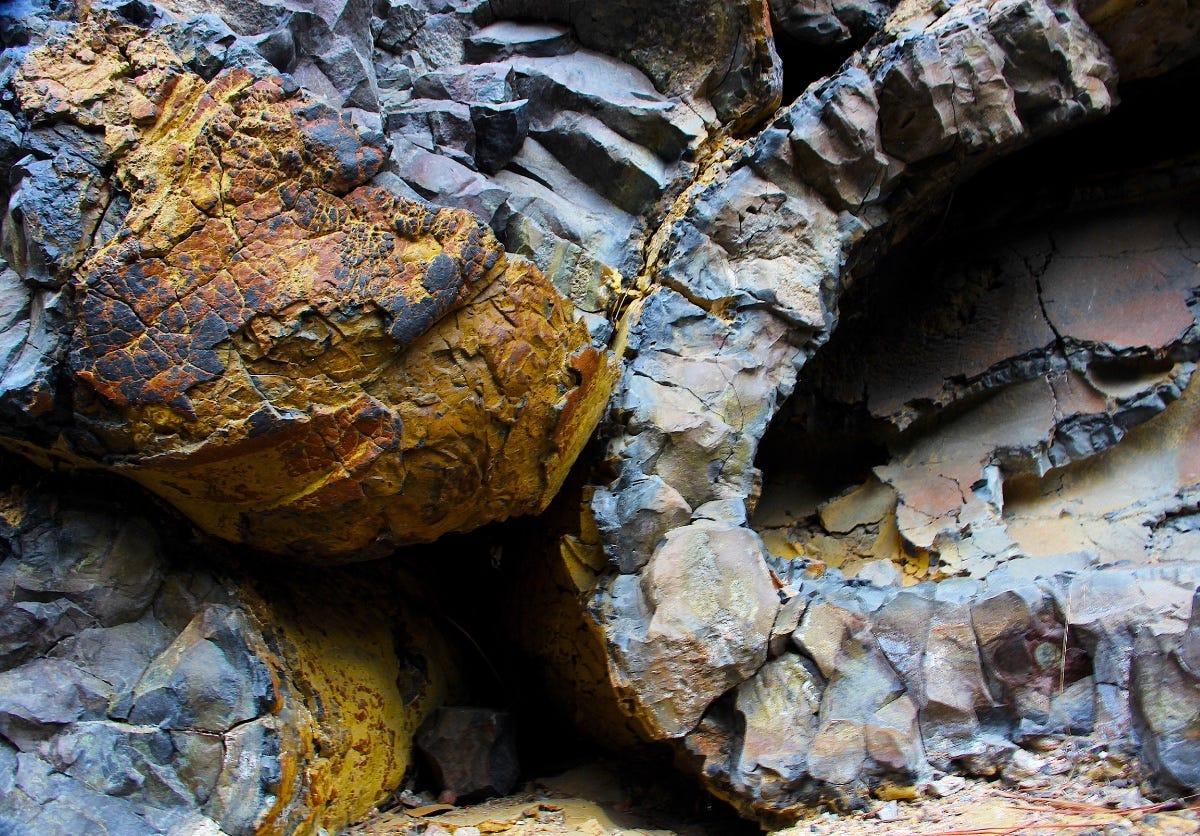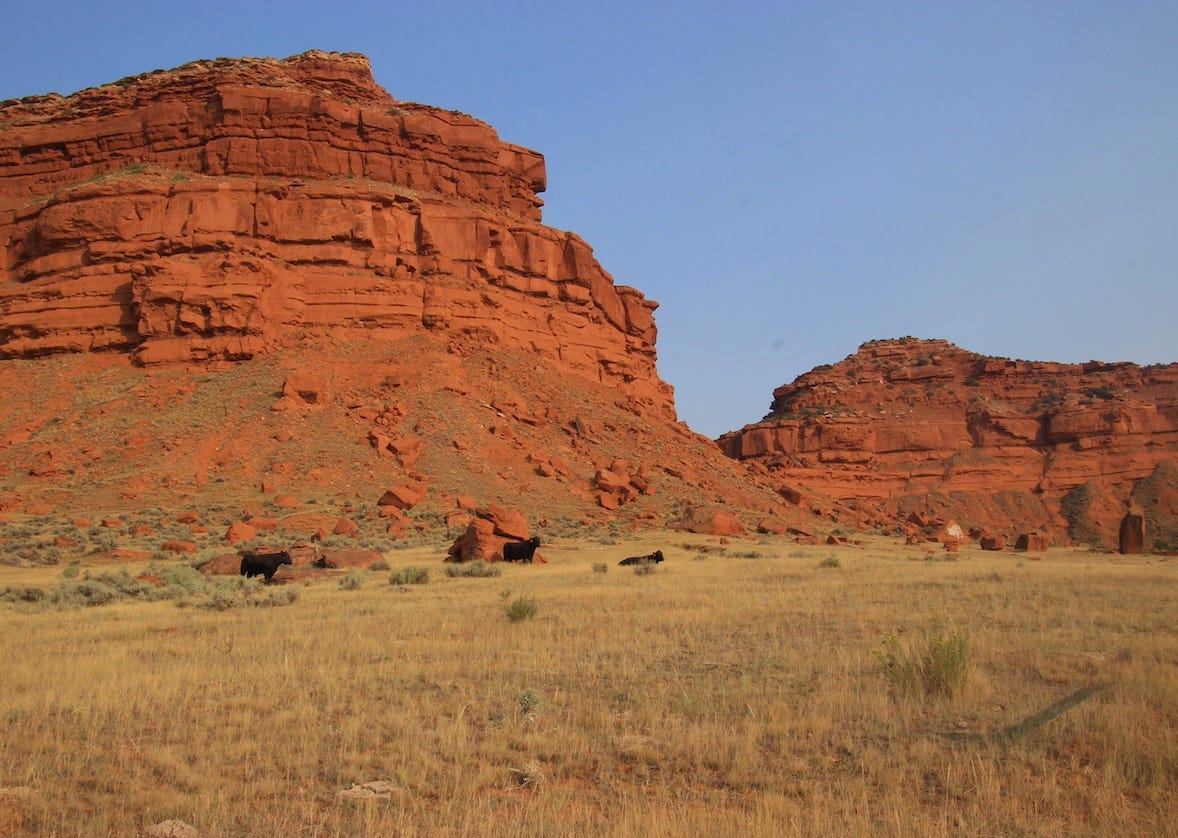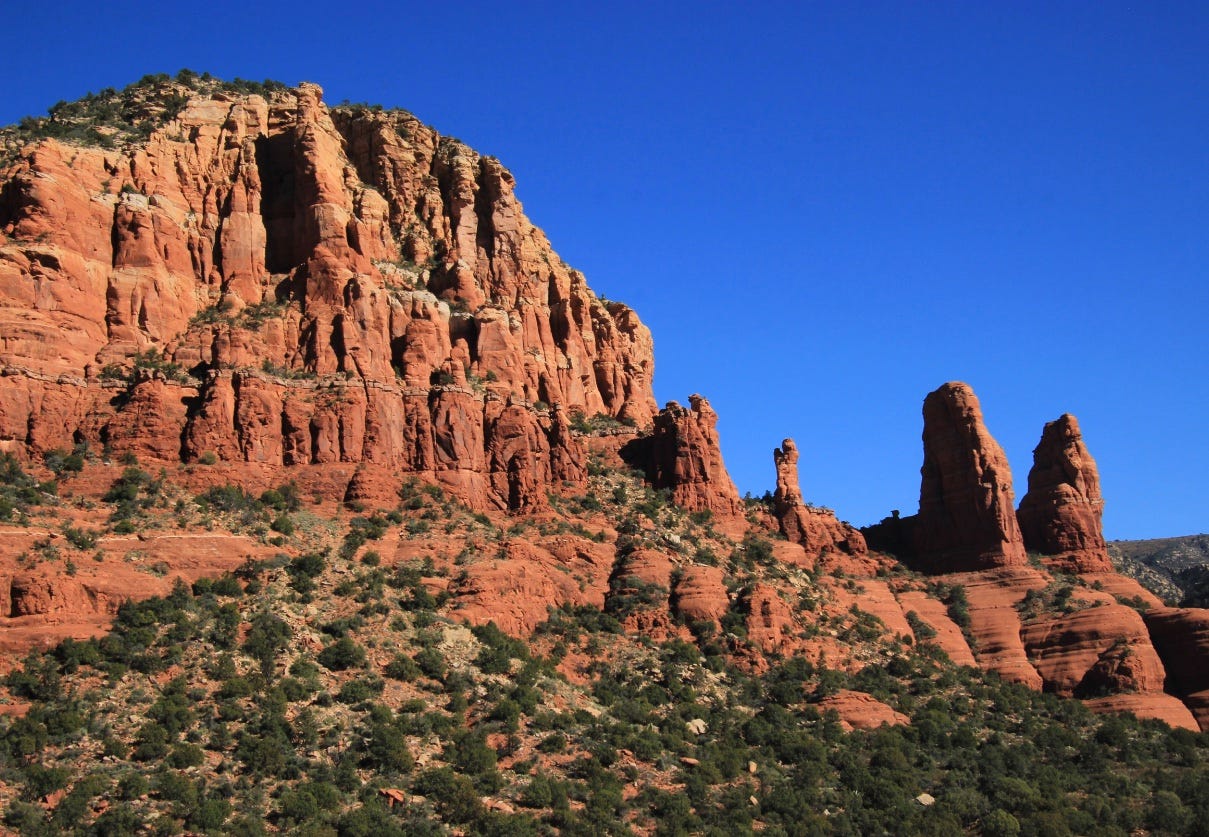Sunday's postcard and visits, with camera, to some favorite western rock formations
March 19, 2023
Blue-eyed crawfish, Spokane River
The Old Testaments (of rock), Part I
I remember two things about my first visit to the Grand Canyon. The first is we all got in trouble. By “we” I mean the four oldest of the Connor children who were deemed old enough to know better than to go over the barrier along the rim. The second is the layers in the rocks, all the way to the bottom, thousands of feet below.
The idea that the Colorado River had carved its way to the impossibly deep bottom, was clear enough, yet still hard to imagine. The epic incision (still in progress) has been underway for 6 million years. The youngest of the rocks the river has cut through—the limestone/marble of the Kaibab Formation—are more than 250 million years old. That’s about 3.5 million human lifetimes. There’s no need to run the math for the deepest rocks in the chasm, the 1.7+ billion year old gneiss, schists and granites that make up the Vishnu Formation. In that trench of time, we are deeply into the unfathomable.
I can’t well explain the awe and solace I absorb in the presence of senior rocks and unabridged landscapes. It’s just better—here—that I just let the photography speak for itself with a minimum of details. Most of the images are from adventures, in recent years, with some of my favorite people, children and dear friends whose humor and companionship are intertwined in the experiences and the memories of time well spent.
—tjc
Towers at the Clarno, Central Oregon
These fortress-like spires near Antelope, Oregon, are the signature of the Clarno unit of the John Day Fossil beds. The Clarno is home to the oldest rocks in the fossil beds–the solidified remains of volcanic mudflows–known as lahars–that inundated what were then tropical forests, between 40 and 54 million years ago.
Arizona’s Granite Dells
The intricately weathered “Granite Dells” in Yavapai County, Arizona, are among the oldest rocks (~1.4 billion years in age) in the American Southwest.
Deep Creek palagonite west of Spokane
The bedrock for much of Washington and Oregon, east of the Cascades, is basalt–the remains of lava that spewed into vast sheets covering more than 80,000 square miles. The vast bulk of the flows occurred between 14 and 17 million years ago. When liquid basalt comes into contact with water it often changes shape and color. Sometimes it cools into a sharp, glass-like material known as palagonite that occasionally includes volcanic glass. The Deep Creek gorge west of Spokane has some of the most colorful palagonite in the region, a remnant of the Grande Ronde lava flows that overwhelmed much of eastern Washington ~ 16 million years ago.
Bighorn dolomite, north central Wyoming
Near the sacred Medicine Wheel on the west shoulder of the Bighorns are stunning outcrops of Bighorn Dolomite, like this one, formed from the carbonate skeletons of marine life in ancient seas–a half billion years ago. This outcrop is nearly 10,000 above sea level.
Hauser Lake gneiss, Idaho panhandle
With but a few exceptions the oldest rock within an hour’s drive of Spokane is the Prichard Formation. It is the basement of the so-called Belt Supergroup and, typically, appears as dull silt and mudstone (argillite). But it really lights up under stress when it transforms into gneiss (pronounced “nice”), a metamorphic rock created when sedimentary or igneous rock is subjected to stone-bending heat and pressure. This is what happened to a large segment of the Prichard, some 50 million years ago, when a portion of the Prichard was heavily folded during a period of intense faulting south of Mt. Spokane. The resulting rock—named Hauser Lake gneiss—after a lake in the Idaho panhandle, is a dazzling rock. This close-up is from a road cut along the east shore of (where else?) Hauser Lake.. There are also striking outcrops of Hauser Lake gneiss at the Saltese uplands, a popular hiking, biking and jogging venue just west of Liberty Lake, WA, near the Idaho border.
The Chugwater, central Wyoming
Skirting the Bighorns and extending into Colorado and Montana is the vividly red Chugwater formation. An enormous, stratified pile of silt and sandstone it dates back to the Triassic period (245 to 208 million years ago)–basically to the dawn of the dinosaurs. The cliffs in this photo are only a few miles from the “Hole-in-the Wall” hideout of Butch Cassidy and the Sundance Kid, near Barnum, WY.
Schnebly Hill sandstone at Sedona, Arizona
In dramatic display in nearly every direction in Sedona, AZ, the Schnebly Hill sandstone is at least as red as the Chugwater sandstone to the north. At 279 million years old, the Schnebly dates back to the late Paleozoic Epoch, when fishes began to emerge. The Schnebly is pinstriped with narrow layers of Fort Apache limestone. This photo was taken in southeast Sedona, looking south.





